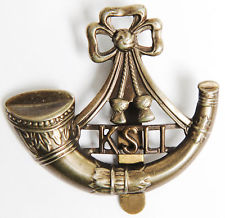Personal Details
Born: 1886 in Whitchurch, Shropshire.
Family: He was the third child born to William Rowe, a labourer, and his wife Margaret. He married Ethel Mary Madeley on 5 February 1913 at St. John`s Wesleyan Chapel, Whitchurch. The couple had two children, William Arthur born in 1913 and John Wilfred born in 1915.
Residence: In 1891 his family were living at 6 Venables Yard, Whitchurch and in 1901 at 2 Venables Yard. The address given for him in the 1919 Absent Voters` List was 2 Deermoss, this was also the address shown on his demobilisation. In 1939 he and his wife were living at 30 Claypit Street, Whitchurch and this was his home at the time of his death in 1940.
Employment: In 1901 William was a butcher’s boy. He joined up in 1903, stating his occupation as a labourer, and served in the military until 1919. He worked for the railways, being a member of the NUR in 1925 and 1928, and was a railway carter (incapacitated) in 1939.
Died: 1940 in Whitchurch, aged 53, and buried in Whitchurch Cemetery on 26 February the same year.
Military Details
Regiment: King’s Shropshire Light Infantry
Rank: Private
Service Number: 7546 (previously 4803)
Date of Enlistment: 19 October 1903
Date of Discharge: 3 April 1919
Reason for Discharge: Demobilisation
Other Information: He suffered shrapnel wounds to the back in 1914, a gunshot wound to the right knee in 1917 and a gunshot wound to the arm in 1918.
William was awarded the Campaign Medals (1914 Star with clasp and roses, Victory and British War Medals)

The 1914 Star (also known as 'Pip') was authorised under Special Army Order no. 350 in November 1917 and by an Admiralty Fleet Order in 1918, for award to officers and men of the British and Indian Expeditionary Forces who served in France or Belgium between 5 August and midnight of 22–23 November 1914. The former date is the day after Britain's declaration of war against the Central Powers, and the closing date marks the end of the First Battle of Ypres.
The 1914–15 Star (also known as 'Pip') was instituted in December 1918 and was awarded to officers and men of British and Imperial forces who served against the Central European Powers in any theatre of the Great War between 5 August 1914 and 31 December 1915. The period of eligibility was prior to the introduction of the Military Service Act 1916, which instituted conscription in Britain.
The British War Medal (also known as 'Squeak') was a silver or bronze medal awarded to officers and men of the British and Imperial Forces who either entered a theatre of war or entered service overseas between 5th August 1914 and 11th November 1918 inclusive. This was later extended to services in Russia, Siberia and some other areas in 1919 and 1920. Approximately 6.5 million British War Medals were issued. Approximately 6.4 million of these were the silver versions of this medal. Around 110,000 of a bronze version were issued mainly to Chinese, Maltese and Indian Labour Corps. The front (obv or obverse) of the medal depicts the head of George V. The recipient's service number, rank, name and unit was impressed on the rim.
The Allied Victory Medal (also known as 'Wilfred') was issued by each of the allies. It was decided that each of the allies should each issue their own bronze victory medal with a similar design, similar equivalent wording and identical ribbon. The British medal was designed by W. McMillan. The front depicts a winged classical figure representing victory. Approximately 5.7 million victory medals were issued. Interestingly, eligibility for this medal was more restrictive and not everyone who received the British War Medal ('Squeak') also received the Victory Medal ('Wilfred'). However, in general, all recipients of 'Wilfred' also received 'Squeak' and all recipients of The 1914 Star or The 1914/1915 Star (also known as 'Pip') also received both 'Squeak' and 'Wilfred'. The recipient's service number, rank, name and unit was impressed on the rim.

